- Home
- Graham Hancock
Fingerprints of the Gods Page 16
Fingerprints of the Gods Read online
Page 16
their feet, they had long beards and their heads were bare ... Kukulkan
instructed the people in the arts of peace, and caused various important
edifices to be built ...’14
Meanwhile Juan de Torquemada recorded this very specific preconquest tradition concerning the imposing strangers who had entered
Mexico with Quetzalcoatl:
They were men of good carriage, well-dressed, in long robes of black linen, open
in front, and without capes, cut low at the neck, with short sleeves that did not
come to the elbow ... These followers of Quetzalcoatl were men of great
knowledge and cunning artists in all kinds of fine work.15
Like some long-lost twin of Viracocha, the white and bearded Andean
deity, Quetzalcoatl was depicted as having brought to Mexico all the
skills and sciences necessary to create a civilized life, thus ushering in a
golden age.16 He was believed, for example, to have introduced the
knowledge of writing to Central America, to have invented the calendar,
and to have been a master builder who taught the people the secrets of
11 Not only obviously related but specifically related. Votan, for example, was often
referred to as the grandson of Quetzalcoatl. Itzamana and Kukulkan were sometimes
confused by the Indians who transmitted their legends to Spanish chroniclers shortly
after the conquest. See Fair Gods and Stone Faces, p. 100.
12 Mysteries of the Mexican Pyramids, p. 347.
13 New Larousse Encyclopaedia of Mythology, p. 439.
14 James Bailey, The God-Kings and the Titans, Hodder and Stoughton, London, 1972, p.
206.
15 Fair Gods and Stone Faces, pp. 37-8.
16 According to the sixteenth century chronicler Bernardino de Sahagun: ‘Quetzalcoatl
was a great civilizing agent who entered Mexico at the head of a band of strangers. He
imported the arts into the country and especially fostered agriculture. In his time maize
was so large in the head that a man might not carry more than one stalk at a time and
cotton grew in all colours without having to be dyed. He built spacious and elegant
houses, and inculcated a type of religion which fostered peace.’
109
Graham Hancock – FINGERPRINTS OF THE GODS
masonry and architecture. He was the father of mathematics, metallurgy,
and astronomy and was said to have ‘measured the earth’. He also
founded productive agriculture, and was reported to have discovered and
introduced corn—literally the staff of life in these ancient lands. A great
doctor and master of medicines, he was the patron of healers and
diviners ‘and disclosed to the people the mysteries of the properties of
plants’. In addition, he was revered as a lawgiver, as a protector of
craftsmen, and as a patron of all the arts.
As might be expected of such a refined and cultured individual he
forbade the grisly practice of human sacrifice during the period of his
ascendancy in Mexico. After his departure the blood-spattered rituals
were reintroduced with a vengeance. Nevertheless, even the Aztecs, the
most vehement sacrificers ever to have existed in the long history of
Central America, remembered ‘the time of Quetzalcoatl’ with a kind of
nostalgia. ‘He was a teacher,’ recalled one legend, ‘who taught that no
living thing was to be harmed and that sacrifices were to be made not of
human beings but of birds and butterflies.17
Cosmic struggle
Why did Quetzalcoatl go away? What went wrong?
Mexican legends provided answers to these questions. They said that
the enlightened and benevolent rule of the Plumed Serpent had been
brought to an end by Tezcatilpoca, a malevolent god whose name meant
‘Smoking Mirror’ and whose cult demanded human sacrifice. It seemed
that a near-cosmic struggle between the forces of light and darkness had
taken place in Ancient Mexico, and that the forces of darkness had
triumphed ...
The supposed stage for these events, now known as Tula, was not
believed to be particularly old—not much more than 1000 years anyway—
but the legends surrounding it linked it to an infinitely more distant
epoch. In those times, outside history, it had been known as Tollan. All
the traditions agreed that it had been at Tollan that Tezcatilpoca had
vanquished Quetzalcoatl and forced him to quit Mexico.
17 The God-Kings and the Titans, p. 57.
110
Graham Hancock – FINGERPRINTS OF THE GODS
Tula
Fire serpents
Tula, Hidalgo Province
I was sitting on the flat square summit of the unimaginatively named
Pyramid B. The late-afternoon sun was beating down out of a clear blue
sky, and I was facing south, looking around.
At the base of the pyramid, to the north and east, were murals
depicting jaguars and eagles feasting on human hearts. Immediately
behind me were ranged four pillars and four fearsome granite idols each
nine feet tall. Ahead and, to my left lay the partially unexcavated Pyramid
C, a cactus-covered mound about 40 feet high, and farther away were
more mounds not yet investigated by archaeologists. To my right was a
ball court. In that long, I-shaped arena, terrible gladitorial games had
been staged in ancient times. Teams, or sometimes just two individuals
pitted against each other, would compete for possession of a rubber ball;
the losers were decapitated.
The idols on the platform behind me had a solemn and intimidating
aura. I stood up to look at them more closely. Their sculptor had given
them hard, implacable faces, hooked noses and hollow eyes and they
seemed without sympathy or emotion. What interested me most,
however, was not so much their ferocious appearance as the objects that
they clutched in their hands. Archaeologists admitted that they didn’t
really know what these objects were but had tentatively identified them
anyway. This identification had stuck and it was now received wisdom
that spearthrowers called atl-atls were held in the right hands of the idols
111
Graham Hancock – FINGERPRINTS OF THE GODS
and ‘spears or arrows and incense bags’ in the left hands.18 It didn’t seem
to matter that the objects did not in any way resemble atl-atls, spears,
arrows, or incense bags.
Santha Faiia’s photographs will help the reader to form his or her own
impression of these peculiar objects. As I studied the objects themselves I
had the distinct sense that they were meant to represent devices which
had originally been made out of metal. The right-hand device, which
seemed to emerge from a sheath or hand-guard, was lozenge-shaped
with a curved lower edge. The left-hand device could have been an
instrument or weapon of some kind.
I remembered legends which related that the gods of ancient Mexico
had armed themselves with xiuhcoatl, ‘fire serpents’.19 These apparently
emitted burning rays capable of piercing and dismembering human
bodies.20 Was it ‘fire serpents’ that the Tula idols were holding? What, for
that matter, were fire serpents?
Whatever they were, both devices looked like pieces of technology. And
bo
th in certain ways resembled the equally mysterious objects in the
hands of the idols in the Kalasasaya at Tiahuanaco.
Serpent Sanctuary
Santha and I had come to Tula/Tollan because it had been closely
associated both with Quetzalcoatl and with his arch-enemy Tezcatilpoca,
the Smoking Mirror.21 Ever-young, omnipotent, omnipresent and
omniscient, Tezcatilpoca was associated in the legends with night,
darkness and the sacred jaguar.22 He was ‘invisible and implacable,
appearing to men sometimes as a flying shadow, sometimes as a
dreadful monster’.23 Often depicted as a glaring skull, he was said to have
been the owner of a mysterious object, the Smoking Mirror after which he
was named, which he made use of to observe from afar the activities of
men and gods. Scholars quite reasonably suppose that it must have been
a primitive obsidian scrying stone: ‘Obsidian had an especial sanctity for
the Mexicans, as it provided the sacrificial knives employed by the priests
... Bernal Diaz [Spanish chronicler] states that they called this stone
“Tezcat”. From it mirrors were also manufactured as divinatory media to
be used by wizards.’24
Representing the forces of darkness and rapacious evil, Tezcatilpoca
was said in the legends to have been locked in a conflict with
18 Mexico, pp. 194-5.
19 The Gods and Symbols of Ancient Mexico and the Maya, pp. 185, 188-9.
20 Ibid.
21 New Larousse Encyclopaedia of Mythology, p. 437.
22 The Feathered Serpent and the Cross, pp. 52-3.
23 New Larousse Encyclopaedia of Mythology, p. 436.
24 The Magic and Mysteries of Mexico, p. 51.
112
Graham Hancock – FINGERPRINTS OF THE GODS
Quetzalcoatl that had continued over an immense span of years.25 At
certain times one seemed to be gaining the upper hand, at certain times
the other. Finally the cosmic struggle came to an end when good was
vanquished by evil and Quetzalcoatl driven out from Tollan.26 Thereafter,
under the influence of Tezcatilpoca’s nightmarish cult, human sacrifice
was reintroduced throughout Central America.
As we have seen, Quetzalcoatl was believed to have fled to the coast
and to have been carried away on a raft of serpents. One legend says, ‘He
burned his houses, built of silver and shells, buried his treasure, and set
sail on the Eastern Sea preceded by his attendants who had been changed
into bright birds.’27
This poignant moment of departure was supposedly staged at a place
called Coatzecoalcos, meaning ‘Serpent Sanctuary’.28 There, before taking
his leave, Quetzalcoatl promised his followers he would return one day to
overthrow the cult of Tezcatilpoca and to inaugurate an era when the
gods would again ‘accept sacrifices of flowers’ and cease their clamour
for human blood.29
25 World Mythology, p. 237.
26 New Larousse Encyclopaedia of Mythology, p. 437.
27 Ibid.
28 Fair Gods and Stone Faces, pp. 139-40.
29 The Feathered Serpent and the Cross, pp. 35, 66.
113
Graham Hancock – FINGERPRINTS OF THE GODS
Chapter 15
Mexican Babel
We drove south-east from Tula, by-passing Mexico City on an anarchic
series of fast freeways that dragged us through the creeping edge of the
capital’s eye-watering, lung-searing pollution. Our route then took us up
over pine-covered mountains, past the snowy peak of Popocatepetl and
thence along tree-lined lanes amid fields and farmsteads.
In the late afternoon we arrived at Cholula, a sleepy town with 11,000
inhabitants and a spacious main square. After turning east through the
narrow streets, we crossed a railway line and pulled to a halt in the
shadow of tlahchiualtepetl, the ‘man-made mountain’ we had come here
to see.
Once sacred to the peaceful cult of Quetzalcoatl, but now surmounted
by an ornate Catholic church, this immense edifice was ranked among the
most extensive and ambitious engineering projects ever undertaken
anywhere in the ancient world. Indeed, with a base area of 45 acres and a
height of 210 feet, it was three times more massive than the Great
Pyramid of Egypt.1 Though its contours were now blurred by age and its
sides overgrown with grass, it was still possible to recognize that it had
once been an imposing ziggurat which had risen up towards the heavens
in four clean-angled ‘steps’. Measuring almost half a kilometre along each
side at its base, it had also succeeded in preserving a dignified but
violated beauty.
The past, though often dry and dusty, is rarely dumb. Sometimes it can
speak with passion. It seemed to me that it did so here, bearing witness
to the physical and psychological degradation visited upon the native
peoples of Mexico when the Spanish conquistador Hernan Cortez almost
casually ‘beheaded a culture as a passer-by might sweep off the head of a
sunflower’.2 In Cholula, a great centre of pilgrimage with a population of
around 100,000 at the time of the conquest, this decapitation of ancient
traditions and ways of life required that something particularly
humiliating be done to the man-made mountain of Quetzalcoatl. The
solution was to smash and desecrate the temple which had once stood on
the summit of the ziggurat and replace it with a church.
Cortez and his men were few, the Cholulans were many. When they
marched into town, however, the Spaniards had one major advantage:
bearded and pale-skinned, dressed in shining armour, they looked like
the fulfillment of a prophecy—had it not always been promised that
1 Figures from Fair Gods and Stone Faces, p. 56.
2 Ibid., p. 12.
114
Graham Hancock – FINGERPRINTS OF THE GODS
Quetzalcoatl, the Plumed Serpent, would return ‘from across the Eastern
Sea’ with his band of followers?3
Because of this expectation, the naive and trusting Cholulans permitted
the conquistadores to climb the steps of the ziggurat and enter the great
courtyard of the temple. There troupes of gaily bedecked dancing girls
greeted them, singing and playing on instruments, while stewards moved
back and forth with heaped platters of bread and delicate cooked meats.
One of the Spanish chroniclers, an eyewitness to the events that
followed, reported that adoring townsfolk of all ranks ‘unarmed, with
eager and happy faces, crowded in to hear what the white men would
say’. Realizing from this incredible reception that their intentions were
not suspected, the Spaniards closed and guarded all the entrances, drew
their weapons of steel and murdered their hosts.4 Six thousand died in
this horrible massacre5 which matched, in its savagery, the most
bloodstained rituals of the Aztecs: ‘Those of Cholula were caught
unawares. With neither arrows nor shields did they meet the Spaniards.
Just so they were slain without warning. They were killed by pure
treachery.’6
It was ironic, I thought, that the conquistadores in both Peru and
Mexico should have benefited in the same way from local legends that
deified human, as seemed likely, he must have been a person of high
civilization and exemplary character—or more probably two different
people from the same background, one working in Mexico and providing
the model for Quetzalcoatl, the other in Peru being the model for
Viracocha. The superficial resemblance that the Spanish bore to those
earlier fair-skinned foreigners opened many doors that would otherwise
certainly have been closed. Unlike their wise and benevolent
predecessors, however, Pizarro in the Andes and Cortez in Central
America were ravening wolves. They ate up the lands and the peoples and
the cultures they had seized upon. They destroyed almost everything ...
Tears for the past
Their eyes scaled with ignorance, bigotry and greed, the Spanish erased a
precious heritage of mankind when they arrived in Mexico. In so doing
they deprived the future of any detailed knowledge concerning the
brilliant and remarkable civilizations which once flourished in Central
America.
What, for example, was the true history of the glowing ‘idol’ that rested
3 Ibid., pp. 3-4.
4 Mysteries of the Mexican Pyramids, p. 6.
5 Mexico, p. 224.
6 Contemporary account cited in Mysteries of the Mexican Pyramids, p. 6.
115
Graham Hancock – FINGERPRINTS OF THE GODS
in a sacred sanctuary in the Mixtec capital Achiotlan? We know of this
curious object through the writings of a sixteenth-century eyewitness,
Father Burgoa:
The material was of marvellous value, for it was an emerald of the size of a thick
pepper-pod [capsicum], upon which a small bird was engraved with the greatest
skill, and, with the same skill, a small serpent coiled ready to strike. The stone was
so transparent that it shone from its interior with the brightness of a candle flame.
It was a very old jewel, and there is no tradition extant concerning the origin of its
veneration and worship.7
What might we learn if we could examine this ‘very old’ jewel today? And
how old was it really? We shall never find out because Fr. Benito, the first
missionary of Achiotlan, seized the stone from the Indians: ‘He had it
ground up, although a Spaniard offered three thousand ducats for it,
stirred the powder in water, poured it upon the earth and trod upon it ...’8

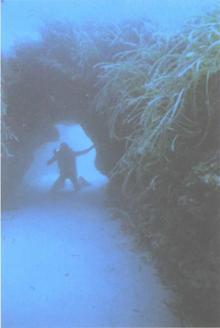 Underworld: The Mysterious Origins of Civilization
Underworld: The Mysterious Origins of Civilization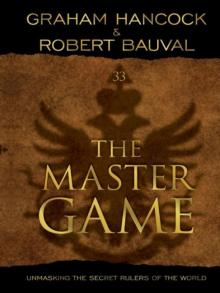 The Master Game: Unmasking the Secret Rulers of the World
The Master Game: Unmasking the Secret Rulers of the World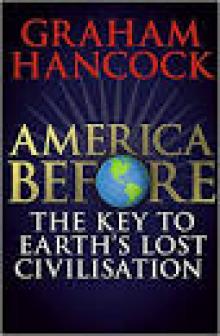 America Before
America Before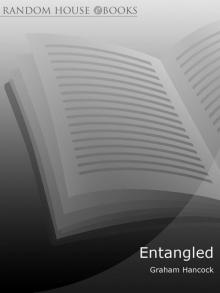 Entangled
Entangled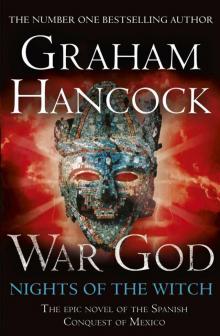 War God: Nights of the Witch
War God: Nights of the Witch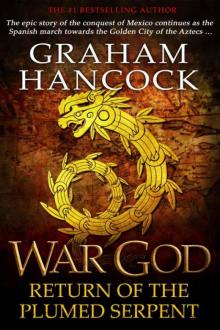 War God: Return of the Plumed Serpent
War God: Return of the Plumed Serpent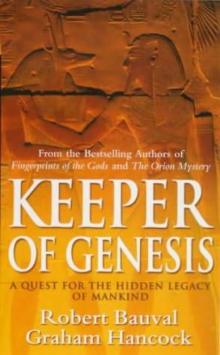 The Message of the Sphinx AKA Keeper of Genesis
The Message of the Sphinx AKA Keeper of Genesis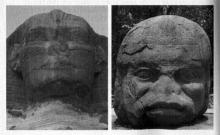 Fingerprints of the Gods
Fingerprints of the Gods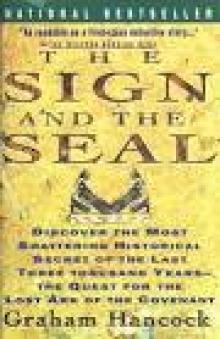 The Sign and the Seal
The Sign and the Seal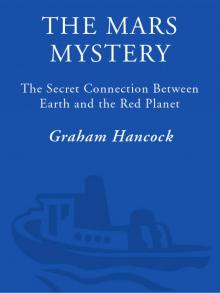 The Mars Mystery: The Secret Connection Between Earth and the Red Planet
The Mars Mystery: The Secret Connection Between Earth and the Red Planet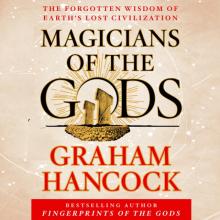 Magicians of the Gods: The Forgotten Wisdom of Earth's Lost Civilization
Magicians of the Gods: The Forgotten Wisdom of Earth's Lost Civilization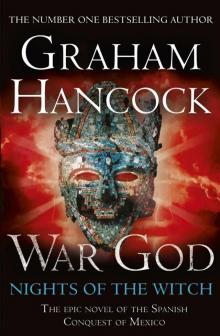 War God
War God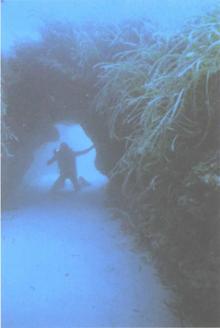 Underworld
Underworld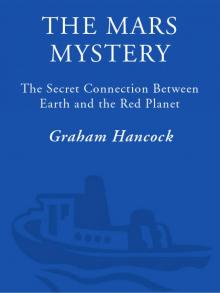 The Mars Mystery
The Mars Mystery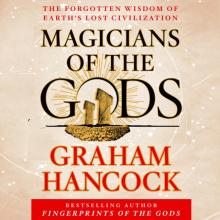 Magicians of the Gods
Magicians of the Gods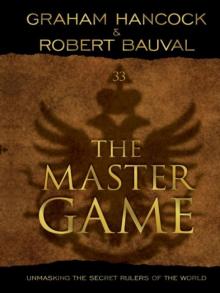 The Master Game
The Master Game